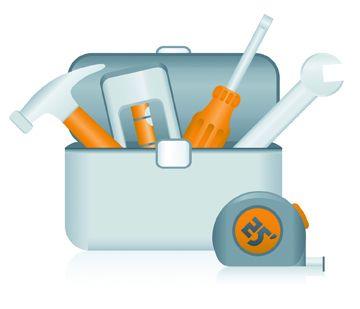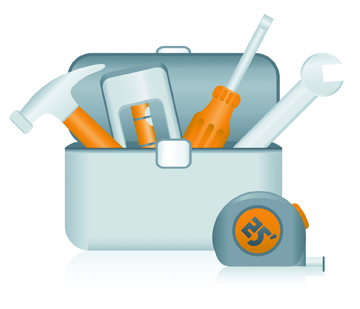
April 2016 Management Toolbox

Overcome Your Fear of Failure
Nearly everyone has been afraid of messing up on the job at some point in their career. Nervousness, anxiety and fear are common emotions, especially when so much may be at stake, including your professional reputation and livelihood. But while it’s normal to feel unsure from time to time, it becomes unhealthy when fear of failure paralyzes you, preventing you from moving forward and performing at your best.
Fortunately, there are ways to combat your fears. The first step is to identify exactly what it is that’s making you most afraid. Are you uncomfortable with how a particular project is going? Have you taken on a new role and don’t feel you have the skills to be successful? Figure out what’s truly bothering you and write it down, including the worst-case scenario. This might seem like a torturous exercise, but for many people, the simple written acknowledgement of their fears creates a sense of relief and helps to open up a path toward conquering what’s bothering them.
Next, consider what you’ve written down and the steps you can take to mitigate your fears. For instance, maybe you wrote that you’re scared of failing in the new position you recently accepted. Some steps to overcome your insecurities might include taking professional development classes to strengthen your skills and focusing on establishing strong working relationships with your new team members. Once you’ve determined what you can do to address your fears head-on, you should begin to devise a plan of action, which will also likely soothe your nerves.
So, now you know what’s causing your distress and you’ve established a plan to tackle it. Your next move is to reach out to your support system. This should include people from your professional and personal lives whom you can connect with to share your experiences and emotions as you work toward your goals. Presumably, all of them have been in your shoes at least once before; their guidance and reassurance can be immensely insightful, inspirational and comforting.
Finally, do your best to maintain an attitude of optimism and patience. This goes for any situation in which you find yourself, but especially when you’re working to overcome your fears. Remember that this is a journey – a marathon, not a sprint – and you may stumble along the way. When things don’t go as planned, a positive, patient outlook will help you to avoid a downward spiral and to learn from the experience and keep moving forward.
*****
5 Ways to Stay Productive While Traveling
Work-related travel has become extremely commonplace these days, with people heading to all corners of the world for meetings, conferences and more. Whether you travel frequently or only a couple times a year, you know it can sometimes throw a wrench into the works – taking you away from your day-to-day workplace and disrupting your schedule. But with the proper planning and execution, you can maintain a high level of productivity even when you’re far from home. Here are a few ideas to consider next time you find yourself playing a game of planes, trains and automobiles.
1. Plan your schedule in advance. The best way to do this is to map out each day. For instance, say you’re heading to Seattle for a conference. Your plane is scheduled to land at 8:30 a.m., and from there you need to head straight to the conference. After that, you have a business dinner to attend, and then you need to check into your hotel. So, on your map for the day, identify how you’re getting to the airport and what time you need to be there; where you’ll pick up your rental car in Seattle; the address of the conference location; the address of the restaurant where the business dinner will be held and how long it will take to get there; and the address of your hotel. Once you’ve scheduled everything for the duration of your trip, put all the times, dates and locations into a digital calendar that you can access from any device, and also print a paper copy of the information just in case.
2. Make sure you have Wi-Fi access. If you’re flying to and from your destination, book flights that offer Wi-Fi so you can send emails and get other Internet-related work done on the plane. But if you don’t have Wi-Fi access, there is still plenty you can accomplish, such as drafting emails, working on spreadsheets and catching up on your reading.
3. Have a backup plan. Mapping out your schedule in advance is smart, but everyone knows that plans change. If a meeting or other event gets canceled during your trip, what will you do with that free time? It’s a good idea to bring your laptop and phone with you wherever you go so you can set up shop in a café or another location, preferably one that offers free Wi-Fi.
4. Don’t forget the little things. Sometimes the smallest issues can create major headaches. For example, if you’re going to be walking a lot during your trip, be sure to pack comfortable shoes. Always keep a phone charger with you; USB chargers are small and can charge your phone multiple times. Bring a spare pair of earbuds in case you lose a pair, and carry earplugs, too – they can be your best friend when you’re trying to get a good night’s sleep in an unfamiliar place.
5. Take care of yourself. It’s tough to be productive if you don’t feel well. So, schedule breaks each day and use them to exercise, take a short nap, watch a little TV or play tourist for a while. And be sure to eat well. That’s easier said than done when you’re away from home, but do your best to eat well-balanced meals and keep junk food and alcohol to a minimum.

